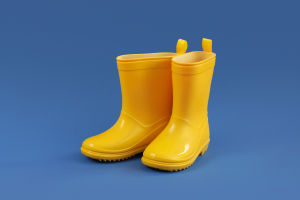Pencils, a seemingly simple writing tool, hold rich historical and cultural connotations.
Since ancient times, humans have yearned for a means to record thoughts and express emotions.
The origin of pencils can be traced back to ancient Egypt, thousands of years BC, when people used tools resembling pencils to write.
However, the real prototype of modern pencils emerged in the 16th century. During this period, a high-quality black ore was discovered in a small village in England, later named graphite. Graphite not only leaves clear marks on paper but is also easy to process, making it an ideal material for writing.
The structure of pencils is relatively simple, primarily consisting of wood, graphite, and rubber (or plastic). The wood is usually pine or another light variety, chosen for its ease of cutting and ability to protect the internal graphite core effectively.
The thickness and hardness of the graphite core vary to meet the needs of different users. The hardness level of pencils ranges from 9H (hardest) to 9B (softest), with each hardness suitable for different writing and drawing styles.
For instance, the H series is ideal for detailed drawings, while the B series is better suited for artistic creation, as they can produce deep shadow effects.
Pencils offer remarkable flexibility in their use. Unlike fountain pens and ballpoint pens, pencils can be modified at will and can be sharpened to adjust the sharpness of writing.
This makes pencils the preferred tool for many artists and designers. In painting, the layering and modifiability of pencils allow artists to create freely on paper. Artists often use pencils of different hardness levels to express various textures and changes in light and shadow within their works.
In addition to their widespread application in art, pencils play an indispensable role in education and daily life. For students, pencils are a fundamental tool for learning to write and draw.
In class, students use pencils to take notes and complete exercises, which not only helps consolidate their knowledge but also cultivates their writing skills.
The easy-to-erase nature of pencils makes them an ideal choice for students, especially in the early stages of learning, when mistakes are common. The ability to erase allows for timely corrections and helps avoid unnecessary frustration.
From an environmental perspective, pencils also demonstrate sustainability. Compared to plastic products, the production process of wooden pencils is relatively eco-friendly. Moreover, pencils can be used for extended periods through sharpening, which reduces resource waste.
As environmental awareness has grown, many companies have begun developing more environmentally friendly pencils, such as those made from recycled wood and biodegradable materials.
This innovation not only addresses the environmental protection needs of modern consumers but also showcases the transformation of pencils in the new era.
The cultural significance of pencils cannot be overlooked. In numerous literary works, pencils symbolize not only a writing tool but also a vessel of thought. Many renowned writers and artists share an indelible bond with pencils throughout their creative careers.
For instance, the famous writer Ernest Hemingway once said, "The process of writing is the process of continuous revision with a pencil." This statement emphasizes the flexibility and creativity that pencils offer in the creative process. Through pencils, thoughts flow onto paper, forming a chain of words that express the deepest emotions and ideas of humanity.
Pencils are a writing tool that transcends time and space. They occupy an important place in history and fulfill multiple roles in modern life. Whether in the classroom, in artistic endeavors, or daily routines, pencils uniquely influence people’s thinking and expression.
With societal progress and advancements in science and technology, pencils will continue to accompany us, remaining a loyal partner in thought and creativity. Regardless of how times change, the simple yet pure charm of pencils will forever resonate in the hearts of all who cherish writing and creativity.


